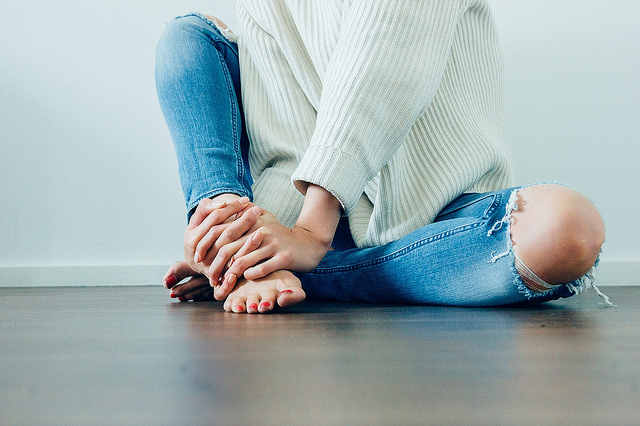5 Common Sources of Knee Pain

I’m sure that many of you have heard of various knee dysfunctions from patella femoral pain syndrome, IT band friction syndrome,and patellar tendonitis to name a few. What many people don’t know however, is that the cause of knee pain almost always is coming from dysfunctions in other parts of the body. In today’s blog I’m going to discuss some of the most common culprits of knee pain that I see in the clinic.
- Weak Glutes: This is an entire topic on it’s own, but not having enough power and endurance in your hips when running, squatting, walking and playing sports can cause havoc on your knees. Your butt muscles are important for proper knee alignment as well as propelling your body forward. Therefore inefficient glutes can lead to overloading of the knee joint as well as the surrounding knee musculature.
- Weak Core: Similar to having weak glutes, not having a strong enough core can lead to poor control of the torso, pelvis and hips. Naturally, being unstable through these areas can lead to excessive motion and poor tracking of the knee joint upon loading.
- Unstable Ankles and Collapsed Foot Arches Looking further down the chain, individuals with pronated feet (collapsed arches) have a tendency for their knees to point inward and collapse in during impact. This goes as well for those with old ankle injuries that perhaps weren’t properly rehabilitated. Training on wobbly or weak ankles makes it extremely challenging to control your knee alignment. Supportive footwear, balance training and ankle strength can go a long way
- Tight IT band and Outer Quads:An imbalance of excessively tight outer quads and weak inner quads can lead to the knee cap being pulled slightly out of the groove that it sits in, often leading to patellar femoral pain syndrome. Tightness through the TFL muscle and IT band on the other hand (typically due to weak glutes) can lead to friction and sometimes inflammation on the outer portion of the knee where the IT band attaches.
- Training-Error: This seems like an obvious one, but we see it all the time in the clinic. Progressing speed, weight training, increasing training distance, or changing training surfaces too quickly can lead to injury. The muscles, tendons and joints surrounding your knee need time to adapt to new load. Gradual progression (only progressing if there is no pain, and you can keep good form!!) and rest days are important here to ensure that repetitive strain injuries don’t set you back.
Charlene Copeland, MPT, CAFCI, NKT®, Clinical Pilates

About twice a month our therapists will be posting answers to commonly asked questions. So, if you have a burning question that you want answered let us know in the comments below.
We can cover anything ranging from active rehabilitation, to injury prevention.
This week our featured therapist is Charlene Copeland. To learn more about Charlene check out our PhysioWorks team.


Leave a Reply